After the release of Toytles: Leaf Raking v1.4.5 last week, I decided to take a break from creating Personality Injection updates so I could work on something else.
I’ve been working on Toytles: Leaf Raking for a few years now, even if you don’t count the period of time when it was on hold while I was focused on a contract game project.
But I have ideas for other games that encourage curiosity and support creativity, and I’d like to start exploring these ideas through the creation of playable prototypes that I will give away for free. These free and quickly put together games will fall under the designation of Freshly Squeezed Entertainment.
Freshly Squeezed Entertainment

Now, to be clear, I do not intend to churn out unplayable junk. Each Freshly Squeezed game will be released as a perfectly playable game. It might not have all of the bells and whistles, but it won’t be broken and it will provide a complete entertaining experience.
The idea behind giving away free games is that I want my games to have as little friction finding their audience as possible, and if enough demand exists for a particular game, perhaps I will create a “deluxe” version for sale. In other words, rather than guess at what random strangers might want based on trends and fads, I’m trying to find and get faster feedback from the people who would be interested in playing the kinds of games I am creating.
My first new project in the Freshly Squeezed line of games is currently titled Toy Factory Fixer.
I spent a little over 3 hours over a few days coming up with ideas, but here’s the premise:
The toy factory had an accident after one of the worker elves tried to automate the assembly of toys.
Now all of the toys are put together wrong, and the shipping deadline is arriving quickly!
You need to put the toys together correctly in time for them to be delivered.
The worker elf implies where this game takes place. Originally, I had planned to make it a Santa’s Workshop game, with the deadline being Christmas Eve. When I explained this project to one of my nieces, she objected. She told me that making it a holiday-themed game might needlessly limit its appeal. She suggested that I instead add holiday-themed elements to the game, but keep the game more evergreen.
She’s 9. And she is probably right.
Ok, so that’s the premise. What’s the game play like?
I spent time trying to explore options. My goal for the player experience was to have the player make strategic choices for how they go about repairing toys.
I didn’t want it to be in real-time. I wanted the game to be less about reaction time and more about thinking and decision-making.
I found myself imagining a factory, with elves working at conveyor belts. I liked the idea of them taking apart bad toys to get toy parts, and then using those parts to put together good toys, and trying to do so before time ran out.
Of course, since it is supposed to be a game, I then started to think about what obstacles that prevent the toys from being separated and put back together too easily?
Here is a list I came up with:
- Time or turns are limited
- Inventory has a maximum capacity
- Factory floor has a limited number of spaces that can be taken up by toys
- Materials such as thread, screws, glue, etc need to be obtained first somehow (perhaps by permanently destroying a toy?)
- Workers must be in correct place to do the work
- Machines must be in the correct configuration to do the work
- There are a limited number of toys to work on at one time
- Toys are work $X and you need to ship $Y worth of toys to succeed
- A machine does multiple types of jobs, but must do them all at once, and since space is at a premium, sometimes toys aren’t where you want them to be
That last one really intrigued and excited me, and I might keep that idea in my back pocket for a future game.
I liked the idea of multiple types of workers. Originally I thought it would be good if each worker was a specialist who could only do one job, but then I liked the idea that they can do any job, and some types of workers can do some jobs better while doing worse at other jobs.
So for example, a Ripper can tear apart stuffed animals in 1 turn but take 3 turns to put a toy together. Meanwhile, a Sewer takes 3 turns to separate stuffed animals but takes only 1 turn to put them together. And presumably there would be an average worker who takes only 2 turns to do everything.
And perhaps there are variations of workers, and they are more effective doing a certain type of job with certain toys than others. So the Ripper is great with ripping apart stuffed animals, but the Cutter is great with cutting apart wooden toys.
I recognized that I was in the “anything and everything is possible” phase, and I wanted to quickly get to something more solid in terms of rules and game play.
I imagined the assembly line acting as a path for creeps/toys to traverse in a Tower Defense game, and the workers would be placed along the conveyor belts to work at stations, grabbing toys as they move down the line and placing toys down to be deposited into a shipping container at the end.
But imagining hides a lot of details, so I started prototyping the game on paper to get a sense for how the game might feel:
Originally I tried to use some abstract wooden circles, stars, and hearts to represent toy parts, but I found it difficult to match them, so I cut up some index cards and drew some pictures. If you’re wondering, the rocking horse is supposed to be a horse top and rocker bottom. My daughter called it a banana. Whatever. It’s a paper prototype. The fidelity doesn’t have to be that high.
I put together a small conveyor belt level, and then tried playing the game by pretending I was hitting the Play button at the bottom to advance one turn, which would produce a toy from the dispenser. Each turn, the toy advanced one square along the conveyor belt, and it eventually advances to the shipping box. I still haven’t figured out what happens if a bad toy makes it into the shipping box, but perhaps a penalty occurs.
I then assigned a worker, and then tried multiple workers, and realized I couldn’t wait until a computer could automate this work for me. Advancing toys down an assembly line, knowing what state a particular worker is in, and trying to figure out the details of mechanics such as what could possibly happen in a single turn of the game is a lot to juggle.
But I did love the basic spine of the game I had put together: toys move down the conveyor belt to a shipping box, and the player assigns workers along the conveyor belts to manipulate and fix the toys before they get there. There are a lot of details to work out, such as whether the workers are autonomous or need to be activated manually, but the basics are pretty much there.
I then decided that perhaps workers should be hired, so it costs money, which means you need some money to start with.
After hiring a worker for 1 Money, you can place them anywhere along the conveyor belt. I wasn’t sure if the worker should just influence the square in front of them or a range of squares adjacent to that square as well. I started picturing that famous “I Love Lucy” episode…
I very quickly needed to figure out what happens to the separated toy parts. Do they disappear automatically into inventory? Does the worker hold them? Does a worker need to run around the level, collecting toy parts from other workers? For now, I just wanted them to disappear into your inventory, since that seemed simpler.
What’s Next?
Toy Factory Fixer is just a paper prototype right now, so I’m looking forward to getting it into digital form soon.
I want to put together a very lightweight project plan, write down all of the ideas I’m having, and then prioritize them so I can get a playable game as quickly as possible.
Ideally, I’d like to get this game out before Christmas, but I don’t know how long it will take me. I estimate that in a Ludum Dare 48 hour game jam, I might spend only about 24 actual hours working due to sleeping, eating, and taking frequent breaks. And if I do 5 hours of game development a week on average, it means that this game is probably behind schedule and won’t be done.
But maybe it won’t take me 24 hours, and I can get something releasable much earlier. We’ll see.
One final thought: I invited my son to talk about this game’s design as it evolves, as I wanted him to get a sense of what the work of game design can look like. He’s been enthusiastic (to the point that I had to tell him that he should wait until I had finished talking about my idea before interrupting me with his own), and it has been some of the best quality time we’ve spent together.
Thanks for reading! I am really excited about this project and the Freshly Squeezed Entertainment line of games it will introduce.
—
Want to learn when I release updates to Toytles: Leaf Raking or about future Freshly Squeezed games I am creating? Sign up for the GBGames Curiosities newsletter, and get the 24-page, full color PDF of the Toytles: Leaf Raking Player’s Guide for free!

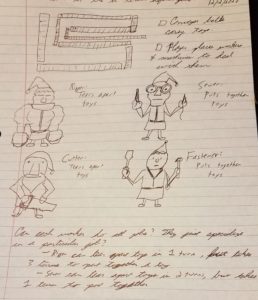

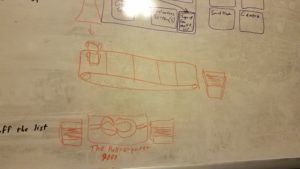
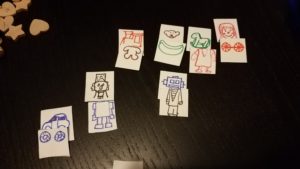
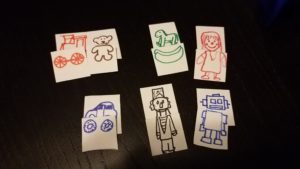

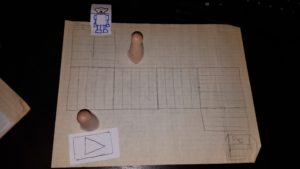

One reply on “Freshly Squeezed Progress Report – Toy Factory Fixer”
[…] my last report, I talked about my plans for creating and releasing games for free as Freshly Squeezed […]